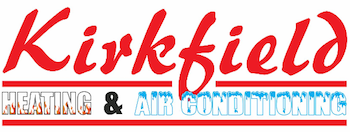
You shouldn’t need to sacrifice comfort or spend a lot to keep your house at the right temperature during muggy weather.
But what is the ideal temperature, exactly? We go over recommendations from energy professionals so you can select the best temp for your loved ones.
Here’s what we recommend for the most energy-efficient setting for air conditioning in Winnipeg.
Recommended Thermostat Settings for Summer
Most people find using the thermostat at 72-73 degrees provides ideal comfort. However, if there’s a major difference between your interior and outdoor temps, your AC costs will be greater.
These are our recommendations based on the U.S. Department of Energy (DOE) and ENERGY STAR®.
While at home: 78 degrees. While that sounds too high, there are ways you can keep your house refreshing without having the air conditioner on frequently.
Keeping windows and window treatments closed during the day keeps cool air where it belongs—inside. Some window treatments, including honeycomb shades or plantation shutters, are created to deliver more insulation and better energy conservation.
If you have ceiling fans in your residence, the DOE says you can move thermostat settings about 4 degrees warmer without sacrificing comfort. That’s due to the fact they cool by a windchill effect. Since they cool people, not areas, turn them off when you exit a room.
If 78 degrees still appears too warm at first glance, try running an experiment for approximately a week. Begin by raising your setting to 78 degrees while you’re at your house. Then, progressively turn it down while adhering to the ideas above. You may be astonished at how refreshed you feel at a warmer temperature setting.
While away: 88 degrees. There’s no rationale for keeping the air conditioner going all day while your residence is vacant. Moving the temp 7–10 degrees higher can save you an estimated 5–15% on your electricity costs, according to the DOE.
When you arrive home, don’t be tempted to switch your thermostat below 78 to cool your house faster. This isn’t useful and typically produces a higher electrical expense.
A programmable thermostat is a good approach to keep your settings under control, but you have to set programs. If you don’t use programs, you run the risk of forgetting to raise the set temperature when you go.
If you need a hassle-free solution, think over getting a smart thermostat. This thermostat works with with your phone, so it realizes when you’re at your house and when you’re out. Then it instinctively adjusts temperature settings for maximum savings. How much exactly? About $180 each year on heating and cooling, according to ENERGY STAR.
Another plus of getting a smart thermostat? You can use your phone to monitor and adjust temperature settings from nearly anywhere.
While sleeping: Around 70 degrees. While ENERGY STAR recommends 82 degrees, that may be unbearable for many families. Many people sleep better when their sleeping area is cold, so that’s why the National Sleep Foundation advises 60–67 degrees. But that could be too cool, based on your clothing and blanket preference.
We suggest running an equivalent test over a week, moving your temperature higher and progressively decreasing it to find the right temperature for your family. On pleasant nights, you might discover keeping windows open at night and using a ceiling fan is a superior solution than running the air conditioning.
More Methods to Save Energy During Hot Weather
There are additional approaches you can conserve money on utility bills throughout the summer.
- Get an energy-efficient air conditioning system. Central air conditioners only last about 12–15 years and get less efficient as they get older. A new air conditioner can keep your residence comfier while keeping electricity bills down.
- Set annual air conditioner tune-ups. Annual air conditioner maintenance keeps your unit working properly and might help it work more efficiently. It may also help prolong its life cycle, since it enables technicians to pinpoint little troubles before they cause a major meltdown.
- Put in new air filters frequently. Follow manufacturer instructions for replacing your air filter. A clogged filter can result in your system short cycling, or turn on and off too much, and raise your electrical.
- Inspect attic insulation levels. Almost 90% of houses in the United States don’t have adequate insulation, according to the Insulation Institute. Many southern climates require 13–14” of attic insulation, while northern climates need 16–18”.
- Have your ductwork inspected. Ductwork that has loosened over time can leak conditioned air into your attic, walls or crawl space. This can create major comfort problems in your house, like hot and cold spots.
- Seal holes, doors and windows. Keep humid air in its place by plugging holes. You can also caulk or weather strip doors to keep more conditioned air inside.
Use Less Energy During Warm Weather with Kirkfield Heating & Air Conditioning
If you need to use less energy during warm weather, our Kirkfield Heating & Air Conditioning specialists can help. Give us a call at 204-272-8128 or contact us online for additional information about our energy-saving cooling solutions.




